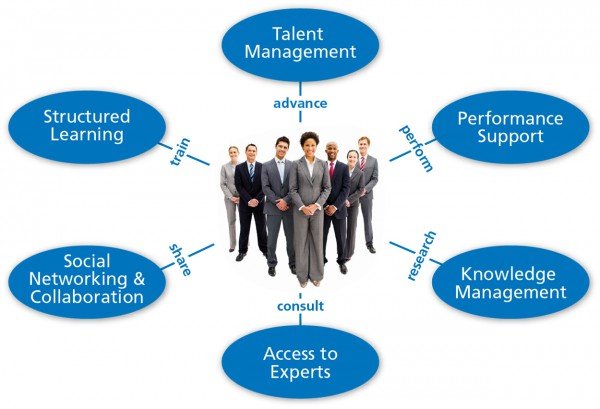Workplace safety isn’t just a box to tick off—it’s a critical factor that impacts every aspect of a business. In fact, according to the International Labour Organization, over 2.3 million people die annually due to work-related accidents or illnesses. This staggering number reveals just how serious the consequences of poor health and safety practices can be. For businesses, unsafe work environments can lead to lost productivity, legal issues, and tarnished reputations. More importantly, they put employees’ well-being at risk.
Creating a safer workplace goes beyond avoiding injuries. It builds trust, boosts morale, and fosters long-term success. It’s not just about adhering to rules and regulations—it’s about cultivating a culture where everyone feels responsible for safety. In this article, we’ll explore why prioritizing health and safety is essential, how it benefits businesses, and the steps you can take to improve your workplace.
1. Understanding and Addressing Workplace Hazards
The first step in creating a safer work environment is understanding the various hazards that may be present. Every workplace has its unique set of risks, whether it’s a construction site with heavy machinery, an office with ergonomic issues, or a manufacturing plant where exposure to chemicals is common. Identifying these hazards is crucial to developing an effective safety plan.
For instance, physical hazards like machinery malfunctions can cause serious injuries, while chemical exposure can lead to long-term health problems. Ergonomic hazards, often overlooked, can result in repetitive strain injuries or musculoskeletal disorders. Understanding these risks requires a thorough assessment of the environment and tasks at hand.
Professionals, particularly those who hold an undergraduate online safety degree like a BS in Occupational Safety and Health, play a key role in identifying and mitigating these hazards. With specialized training, these professionals are equipped to perform risk assessments, ensure compliance with safety regulations, and recommend appropriate solutions to address the risks. By hiring or consulting with safety experts, businesses can take proactive steps toward making their environments safer for everyone.
2. The Importance of Comprehensive Health and Safety Training
No matter how many safety protocols are in place, they are only as effective as the people who implement them. This is where comprehensive health and safety training comes into play. Proper training ensures that employees are well-versed in identifying hazards, handling equipment safely, and responding appropriately in the event of an emergency.
When employees are trained to recognize the risks involved in their work, they can take precautions to avoid accidents. Additionally, well-trained employees are more likely to feel confident in their ability to work safely, which reduces the likelihood of mistakes caused by uncertainty or confusion. Training programs should be tailored to the specific needs of the workplace, focusing on the hazards that are most relevant to the job.
3. Encouraging Employees to Take an Active Role in Safety Programs
One of the most effective ways to improve workplace safety is to encourage employee involvement in safety initiatives. Employees who feel they have a voice in safety matters are more likely to take ownership of their well-being and that of their coworkers. Empowering employees to report hazards, suggest improvements, or participate in safety committees can lead to more engaged and safety-conscious teams.
Open communication is key to fostering this culture of involvement. Employers should create a system where employees can easily report safety concerns without fear of repercussions. Regular safety meetings and feedback sessions also provide a platform for workers to contribute ideas on how to improve workplace safety. When employees are actively involved, they become partners in creating a safer work environment, leading to a more collaborative and proactive approach to safety.
4. Conducting Regular Safety Audits to Identify and Mitigate Risks
Safety audits are an essential part of maintaining a safe workplace. These audits involve a comprehensive review of workplace conditions, equipment, and procedures to identify potential hazards and ensure compliance with health and safety regulations. Regular audits allow businesses to stay ahead of risks by addressing issues before they lead to accidents.
Audits should be conducted by qualified professionals who can assess every aspect of the workplace, from the condition of machinery to the implementation of safety protocols. Following each audit, businesses should take prompt action to address any identified risks, whether that means updating procedures, repairing faulty equipment, or providing additional training to employees. Regular safety audits not only reduce the likelihood of accidents but also demonstrate a company’s commitment to employee safety.
5. Understanding Legal Obligations and the Consequences of Non-Compliance
Complying with health and safety regulations is not just about protecting employees—it’s also about protecting the business from legal and financial repercussions. Employers are legally required to maintain safe working conditions, and failure to do so can result in hefty fines, lawsuits, and even criminal charges in cases of gross negligence.
It’s crucial for businesses to stay up to date with local, state, and federal safety regulations. This includes understanding industry-specific laws that may apply, such as those governing hazardous materials, machinery safety, or emergency response protocols. Ensuring compliance with these regulations not only avoids legal penalties but also improves overall safety outcomes, fostering a positive work environment and reducing turnover due to safety concerns.
Creating a safe work environment is not only a moral obligation but a smart business decision. Prioritizing health and safety helps prevent accidents, protect employees’ well-being, and avoid costly legal issues. By fostering a culture of safety, involving employees, and using technology to monitor and mitigate risks, businesses can build a safer, more productive environment. Regular training, mental health support, and continuous safety audits further strengthen this approach, ensuring that employees feel valued and protected.
Ultimately, a safer workplace leads to higher job satisfaction, increased productivity, and a positive reputation for the company. By investing in health and safety now, businesses set the foundation for long-term success and the well-being of their greatest asset: their employees.












